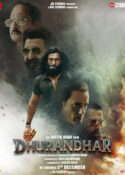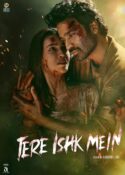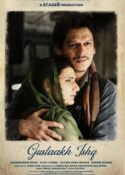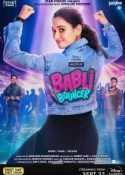 In this very special birthday feature noted director Sanjay Leela Bhansali reminiscences and shares fascinating thoughts and insight on the films he grew up watching. You do not want to miss this!
In this very special birthday feature noted director Sanjay Leela Bhansali reminiscences and shares fascinating thoughts and insight on the films he grew up watching. You do not want to miss this!
1. Meghe Dhaka Tara (1960): “The way Ritwick Ghatak used Rabindra Sangeet and the level of performance he got out of the leading lady Supriya Chowdhary act remain etched in my mind. Ritwick was so ahead of his times. He himself never knew why he was taking a shot in a particular way. Years later, someone like me, watching the film, discovered the emotional content, which was so potent that it survived all the ravages of time. Ritwick Ghatak understood the power of sound and image.”
2. Mirch Masala (1985): “For the sheer power of the folk tale. The folk tale is told in such vibrant colours. The use of colour red and the tribute to woman power. And at the centre of it all the amazing Smita Patil.”
3. Pakeezah (1970): “Director Kamal Amrohi was able to preserve a language that’s so Indian, so traditional and elegant. The Mujras, sher-o-shayari, and the tahzeeb of nawabi culture, great songs, dialogue, scale, and Meena Kumari… it was so breathtaking.”
4. 36 Chowringhee Lane (1981): “I love its tenderness and photography. But most of all, I love Jennifer Kapoor. This was unarguably one of the best performances seen in Indian cinema. So shocking when it missed the National Award. Aparna Sen beautifully captured the sounds, sights, and scents of Kolkata. A lot of detailing went in getting the anglo-Indian lifestyle correct. And specially illuminating was Aparna’s portrayal of loneliness. Everything from the title (and its number 36) to supporting performances by Dhritiman Chatterjee and Debashree Roy were bang-on.
5. Bandini (1963): “A beautiful and haunting tale told beautifully by Bimal Roy. Nutan’s performance ranks next to anything that Meryl Streep has done. They don’t make actresses like her anymore. The climax of the film is one of the most poignant interludes. And S D Burman’s music…ooof! Bimal Roy’s control and restrain are not my style of filmmaking. He was a minimalist. I am not. Though I must say the heroines in my film are inspired by Bimal Roy. Aishwarya Rai Bachchan as Nandini in Hum…Dil De Chuke Sanam was Bandini. And the dilemma that the heroine faces in Hum…Dil De Chuke Sanam and Saawariya was Bimalda’s Bandini.”

6. Pyaasa (1957): “It was Guru Dutt’s tribute to Saratchandra Chatterjee’s Devdas. Guru Dutt’s Vijay in Pyaasa was a precursor to Mr Bachchan’s angry young Vijay. Pyaasa portrayed the isolation of the extremely sensitive artiste in a vulgar and commercial milieu. The relevance of Vijay remains. The use of light and shadow and the songs, especially ‘Aaj sajan mohe ang lagaa re’, were outstanding. Guru Dutt’s artistry was never camouflaged by the message.”
7. Do Aankhen Barah Haath (1957): “The sheer power, passion, and conviction of V Shantaram that human beings can be reformed swept me away. Beautifully shot and beautiful music, especially ‘Ghumad ghumadke aaye ri ghata’.
Special Mention: Please add K Asif’s Mughal-e-Azam and Mehboob Khan’s Mother India. How can I not mention them?”















